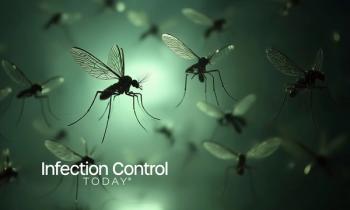
WHO/UNICEF Highlight Need to Further Reduce Gaps in Access to Improved Drinking Water and Sanitation
Since 1990, almost 2 billion people globally have gained access to improved sanitation, and 2.3 billion have gained access to drinking-water from improved sources. Some 1.6 billion of these people have piped water connections in their homes or compounds, according to a new WHO/UNICEF report, Progress on Drinking Water and Sanitation: 2014 Update, which also highlights a narrowing disparity in access to cleaner water and better sanitation between rural and urban areas.
A new report highlights a narrowing disparity in access to cleaner water and better sanitation between rural and urban areas. Photo by WHO/UNICEF
Since 1990, almost 2 billion people globally have gained access to improved sanitation, and 2.3 billion have gained access to drinking water from improved sources. Some 1.6 billion of these people have piped water connections in their homes or compounds, according to a new WHO/UNICEF report,
More than half of the global population lives in cities, and urban areas are still better supplied with improved water and sanitation than rural ones. But the gap is decreasing. In 1990, more than 76 percent people living in urban areas had access to improved sanitation, as opposed to only 28 percent in rural ones. By 2012, 80% urban dwellers and 47 percent rural ones had access to better sanitation.
In 1990, 95 percent people in urban areas could drink improved water, compared with 62 percent people in rural ones. By 2012, 96 percent people living in towns and 82 percent of those in rural areas had access to improved water.
Despite this progress, sharp geographic, socio-cultural, and economic inequalities in access to improved drinking water and sanitation facilities still persist around the world.
“The vast majority of those without improved sanitation are poorer people living in rural areas. Progress on rural sanitation – where it has occurred – has primarily benefitted richer people, increasing inequalities,” says Dr. Maria Neira, WHO's director for public health, environmental and social determinants of health.
“Too many people still lack a basic level of drinking water and sanitation. The challenge now is to take concrete steps to accelerate access to disadvantaged groups. An essential first step is to track better who, when and how people access improved sanitation and drinking water, so we can focus on those who don’t yet have access to these basic facilities,” she adds.
In addition to the disparities between urban and rural areas, there are often also striking differences in access within towns and cities. People living in low-income, informal or illegal settlements or on the outskirts of cities or small towns are less likely to have access to an improved water supply or better sanitation.
“When we fail to provide equal access to improved water sources and sanitation we are failing the poorest and the most vulnerable children and their families,” said Sanjay Wijesekera, UNICEF Chief of Water, Sanitation and Hygiene. “If we hope to see children healthier and better educated, there must be more equitable and fairer access to improved water and sanitation.”
Poor sanitation and contaminated water are linked to transmission of diseases such as cholera, diarrhea, dysentery, hepatitis A, and typhoid. In addition, inadequate or absent water and sanitation services in health care facilities put already vulnerable patients at additional risk of infection and disease.
The report presents estimates for 1990-2012 and is based on data from nationally representative household surveys and censuses for the same period. It reveals that by 2012, 116 countries had met the Millennium Development Goal (MDG) target for drinking water, 77 had met the MDG target for sanitation and 56 countries had met both targets. MDG 7.C aims to halve, by 2015, the proportion of the population without sustainable access to safe drinking water and basic sanitation.
Key findings of the report include:
- By the end of 2012, 89 percent of the global population used improved drinking water sources, a rise of 13 percentage points in 22 years or 2.3 billion people.
- By the end of 2012, 64 percent of the global population used improved sanitation facilities, a rise of 15 percentage points since 1990. Some 2.5 billion people – two-thirds of whom live in Asia, and a quarter in sub-Saharan Africa – still use unimproved sanitation facilities. There are 46 countries where at least half the population is not using an improved sanitation facility.
- Although declining across all regions, open defecation is practised by 1 billion people, 82 percent of whom live in 10 countries. Nine out of 10 people defecating in the open live in rural areas.
- Wealthy people universally have higher access to sanitation than the poor. In some countries this gap is narrowing. The gap is increasing, however, in rural areas of countries with low coverage and for marginalized and excluded groups.
- 748 million people – 90 percent living in sub-Saharan Africa and Asia (43 percent in Sub-Saharan Africa, and 47 percent in Asia) – still use unimproved drinking water sources; 82 percent live in rural areas.
Source: WHO
Newsletter
Stay prepared and protected with Infection Control Today's newsletter, delivering essential updates, best practices, and expert insights for infection preventionists.




